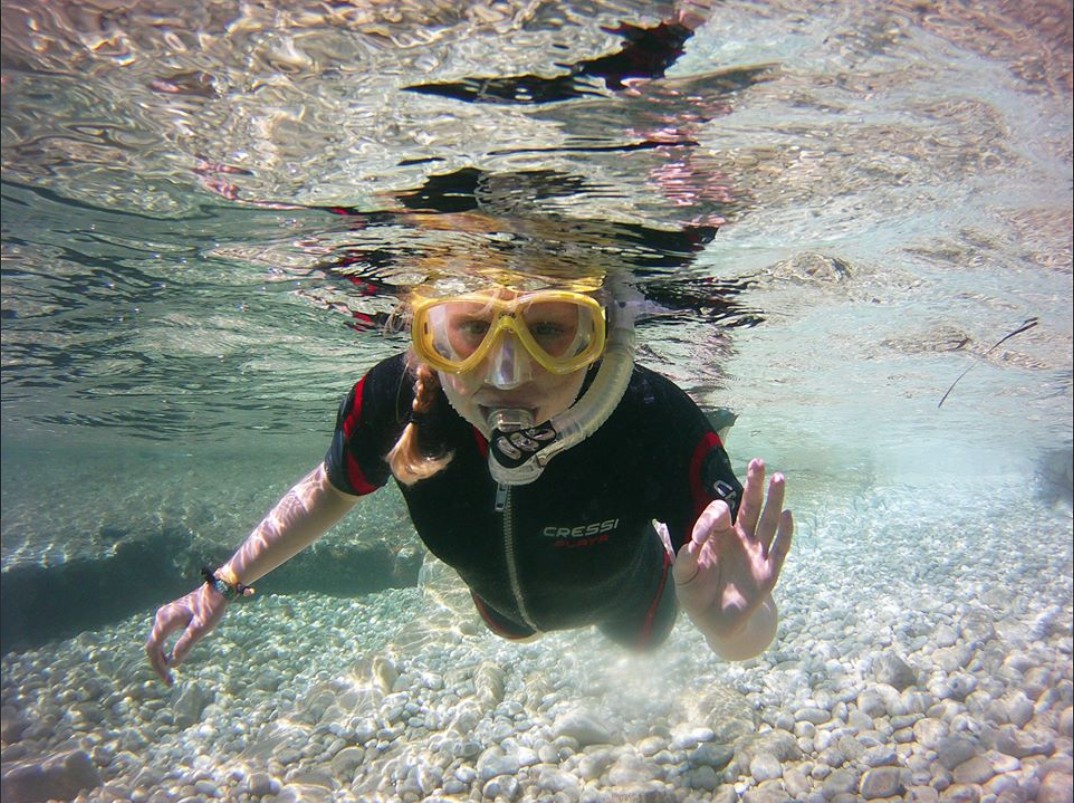The Underwater Life of the Ionian Sea

The Ionian Sea is an area to the west of the Greek mainland, that spans from Corfu in the north to Crete in the south. Most visitors come to the region to enjoy the good food, the unique atmosphere in quaint little villages, and maybe some sailing between the islands. But there is a lot to see under the surface of these turquoise waters, as this article will prove. Are you ready to don your snorkelling gear or try some diving?
The Ionian Sea is an important habitat for marine biodiversity. It is home to majestic creatures, such as monk seals, whales, and dolphins. The island of Zakhyntos, towards the south of the Ionian Sea, is actually the most important nesting area in the Mediterranean for loggerhead turtles.
A recent part of the fish species in the Ionian Sea is the lionfish, originally a species found in the Indian Ocean but introduced to the Mediterranean through the Suez Canal. Cornetfish, moray eels, and stingrays can also be spotted. Apart from these mammals and fish, the Ionian Sea is rich in molluscs, crustaceans, and corals.
Most coastal areas and islands in the Ionian Sea have crystal clear waters in the most beautiful tones of green and blue. They seem to scream “come explore” and for many, there is no better way to do so then by strapping on some snorkelling gear. And indeed, this water sport is both affordable and a lot of fun. You can bring your own gear or rent it from a local shop.
When snorkelling in the Ionian Sea, expect to see smaller fish closer to the shore. These warmer, shallow waters are a perfect nursery for baby fish and smaller species. On the sandy seabed you will find molluscs such as sea cucumbers and sea urchins. When you get closer to rocks, for example at both ends of a little bay, fish of all shapes, colours, and sizes come into view.
Paxos is one of the destinations at which you can enjoy the Ionian Sea in all its splendour. This little island offers a great variety of underwater landscapes: sandy bottoms, rock formations, reefs, shipwrecks, seaweeds, and caves. With visibility often surpassing thirty metres, each dive offers a lot to take in.
The eastern side of the island is the shallow one, whereas the western coast has dramatic cliffs that plunge deep into the Ionian Sea, and stronger currents. On this west side are rock formations such as the Ortholitos, a pyramid emerging out of the water, and the Tripitos, a natural stone arch.
Oasi Sub is a dive centre in Lakka. It has been operative and PADI-certified since 2002. Apart from a diving school, you can rent equipment here and join on one of their daily dives.
Another diving centre on Paxos is Water Planet in the island’s capital Gaios. This centre offers courses and diving experiences. You can do shore dives and boat dives, on Paxos as well as on neighbouring Antipaxos.
